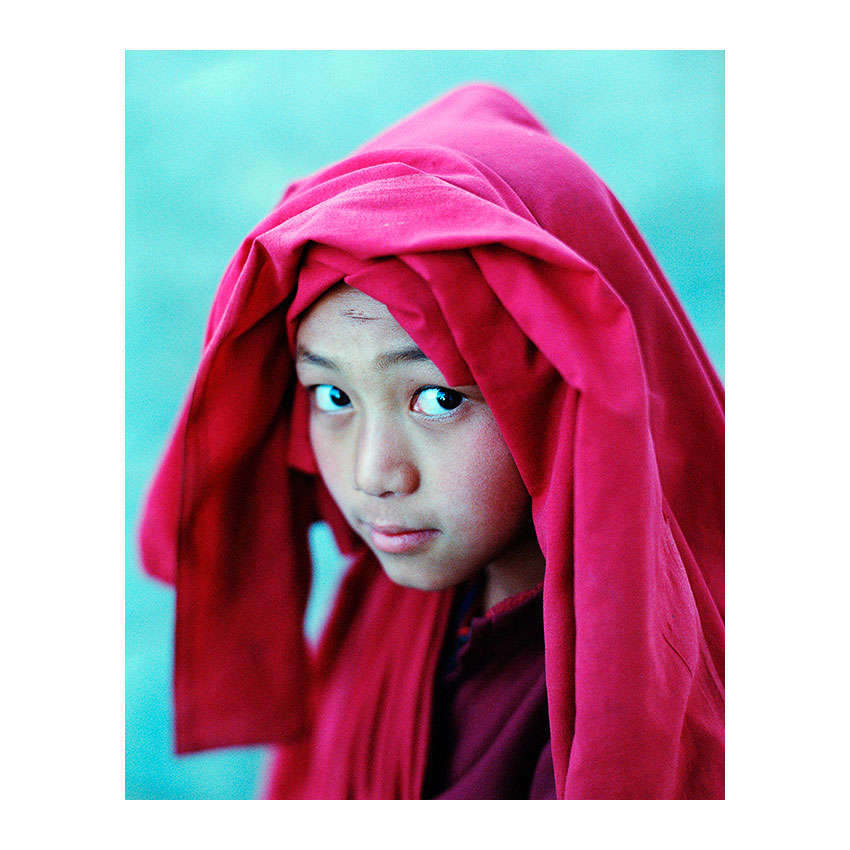I’ve just gone through the rolls of film from my shoot in Bhutan in 2016. They’ve been sitting in a ‘to do’ list for over two years. I think, sometimes I really need distance from a shoot, plus I have a lot of other things on. This is no longer unusual for me to sit on images for so long. I have other images from other shoots that are sitting patiently for when I feel I’m ready to work with them.
One of the delights about this trip, was being able to get behind the scenes access. I can only thank Ewen Bell for assisting in this. I joined Ewen’s tour in Bhutan, which I thought was amazingly well organised. So much research and time he must have spent, and he has great relationships with the people he works with in Bhutan, so I think this was all a matter of trust that was bestowed upon us.
I can’t say I’m a brilliant portrait shooter. In fact, I was overcome with a lack of confidence at the start of the trip and it took me a week or so to get comfortable. Somehow, I just didn’t have the courage to approach people. This does happen to me from time to time.
I’m always left wondering why landscape shooters don’t enjoy portraiture. To me, people are much more dynamic but ultimately, a good portrait shot is like a good landscape shot : they both contain a good composition, good colour and tonal relationships and of course, soul.
Portraiture is harder work for me. I know my real forte is landscape work, but that doesn’t or shouldn’t mean that it’s all I should do. I get immense pleasure out of meeting people, the interaction making pictures of them, and it adds another dimension to my photographic life.
The biggest technical challenge for me was shooting in such low light. I’m a film photographer and the highest film speed I can travel with is 800 ISO. It’s simply not fast enough for many of the interior locations I was in. I pre-empted this with taking along a monopod, but still, shooting wide open at f2, and finding the camera telling me I have a shutter speed of 1/4 second isn’t ideal….. I was frustrated.
I also got some x-ray damage on some of the rolls of film, despite having a lead bag to travel home with the films. I don’t believe in the myth that X-ray operators turn up the x-ray if they can’t see inside the bag - it makes more sense to me that they will just stop the bag and have it searched, and that the x-ray machine would be set to a fix dosage. So I think that all that’s happened is that some of my films weren’t in the lead bag - maybe still in the film magazine of my Contax 645 camera. Anyway, it’s only about 2% of the films that were damaged, and even then, it was a slight oscillation throughout the film and hardly detectable at times.
But I do wonder about shooting digital for these kinds of interior shots. High ISO digital capture is so good now. However, I just don’t like the ‘look’ of digital. There’s a depth and intensity to the colours of film that I don’t see in digital work, but perhaps that’s all in my mind. Who knows?
If you’ve never given portraiture a chance, then you should. The hardest part is asking, and the second hardest part is staying with your subject and directing them if need be.







